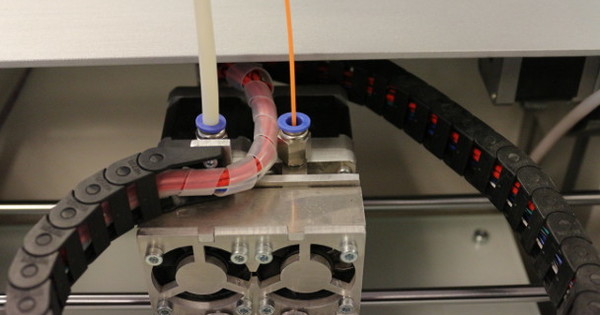Photos that you take with a digital camera contain all kinds of personal information and that applies even more to snapshots that you shoot with a smartphone or tablet. Information that is automatically added to the photo is of course privacy sensitive, but tags that you add yourself are often useful for quickly sorting, grouping or protecting your copyright. We give 14 tips for metadata in your photos.
Tip 01: Metadata
With every photo you take with a digital device, the camera not only captures the image, but also adds a lot of peripheral information about that photo to the file. This metadata, which means 'data about data', forms the embedded information sheet of the photo, as it were. Metadata is generated and stored with digital cameras, but also with integrated cameras, such as those in your smartphone or tablet.

Tip 02: Exif Data
Metadata is not really hidden, but you have to request it to see it. There are different types of metadata. This is because this data is not standardized. The most famous are the exif tags, which stands for 'exchangeable image format'. This contains the date and time of the recording, the make and model of the device, a thumbnail image, the program mode and an overview of all settings (iso, aperture, shutter speed, focal length, flash, etc.).
If you do not want to share all the privacy-sensitive information, you can delete this dataTip 03: GPS location
If your device supports geolocation, the system in your camera or smartphone adds the coordinates of where you took the photo. This is interesting if you want to automatically display the photo on a map later. If you share this photo via the internet, you should know that the whole world can find out in which playground your toddlers often play and at which address you took the beautiful interior photos. Fortunately, if you do not want to share all that privacy-sensitive information, you can delete the data.
Find out location
When the photo has GPS coordinates, you don't have to be a computer guru to trace where the shot was taken. For example, surf to Pic2Map. Upload the photo from the hard drive, which can be done by drag & drop. Moments later, the location appears in the form of a red pin on the map or on the satellite image. Scroll down to see camera information, file information, and date and time information. With Pic2Map you can also find out the location of photos that are on someone else's blog.

Tip 04: Explorer
If you want to view and remove the exif information from a photo file in Windows, you can easily do that via Windows Explorer. The disadvantage of this way is that you only strip the basic data: you cannot delete all exif data. Open Windows Explorer by pressing the combination Windows key+E and navigate to the photo file. Right click on it and choose Characteristics. Then open the tab Details. There you will find the exif information. click on Delete properties and personal data to change the exif data.
Myths
It is an exaggeration to say that it is better to erase the metadata to make the online photo files much smaller. After all, the profit you make from this is minimal. We put it to the test and added 244 fields with extensive meta tags to a photo. This increased the file size by only 39.2 Kb. For a high-resolution photo, this is actually negligible. A second myth is that removing metadata is against the law. Of course you are not allowed to remove copyright information from other people's photos, but as long as it concerns your own images, you can do whatever you want with them.
TrashExif lets you quickly erase metadata from photos taken with your iPhoneTip 05: Android
If you take most photos with your mobile phone, it is worth installing an app to erase the exif data along the way. That way you don't have to load the photos onto the PC first to do the cleaning there. There are dozens of Android apps on Google Play that strip exif information. Banana Studio's Photo Exif Editor is used to view and edit this information. Is the stored time, date or shutter speed incorrect? You adjust it easily. The application for changing the location is very useful. If you use geotagging, this can sometimes go wrong. Finally, you can also just use this free app as an exif stripper.
Tip 06: iOS
There are also excellent exif erasers for iOS devices. TrashExif is free. You can store metadata you want to delete in various presets. That way you determine what should and should not be deleted. Then you choose a preset and then you select the photos for which you want to provide this extra information. The app even has a QuickRemove feature to quickly erase the metadata from the last photos you took, by simply launching the app.

The Facebook case
Most social media websites such as Facebook, Twitter and Instagram automatically remove the EXIF data when a user uploads their photos. After all, it is too risky for a miscreant to retrieve the GPS data of users in this way. However, not everyone is happy with this. Late last year, Rainer Steußloff, a photographer from Berlin, won a lawsuit against Facebook because the company removed copyright information from the exif data of its photos. This practice goes against the German copyright law that protects the information a photographer adds to his images. It is unlikely that Facebook will change its policy on this only for German users.

Tip 07: iPhone
If you have an iPhone or iPad and absolutely want to avoid the GPS data being linked to the snapshots that they take with this device, it is better to turn off the location data for the Camera app. Go to Institutions and choose Privacy. Then select Location Services and choose you Camera. You notice here that you can completely disable location services by selecting the Never choice, but that rarely makes sense. It is better to indicate per app which may use the location data.
Viewing and removing Exif info is also possible with the online tool VerExif
